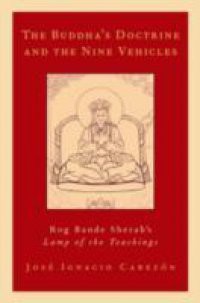Following the fall of the Tibetan empire and the ensuing "period of fragmentation," the twelfth and thirteenth centuries saw tremendous religious efflorescence in Tibet. Although the Tibetan scholars and adepts of this period continued to draw from the texts and practices of Indian Buddhism, they also began to craft distinctly Tibetan intellectual and spiritual traditions. Hundreds of important masters lived and worked during this time, some of whom founded institutions that still exist today. Equally important were the scholars who lived on the margins of institutionalized Buddhism, teachers and meditators whose works, despite their great creativity, have been largely forgotten. Jose Cabezon offers a study of the life and most important extant work of one such figure, Rog Bande Sherab, also known as Rogben (1166-1244). Rogben studied under some of the greatest teachers of his day. An itinerant scholar and yogi, he devoted his life to collecting important textual cycles and meditation techniques. Rogben's most important work, The Lamp of the Teachings, cuts across the genres of history, doctrinal studies, and doxography. It is one of the earliest philosophically robust explanations of the "nine vehicle" system of the Ancient or Nyingma school of Tibetan Buddhism. The Buddha's Doctrine and the Nine Vehicles is the first scholarly study of Rog Bande Sherab, a pivotal figure in both the Pacification (Zhiche) and Ancient traditions of Tibet, and one of the most original thinkers in Tibetan intellectual history.






 7 (1)
7 (1) 











